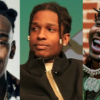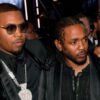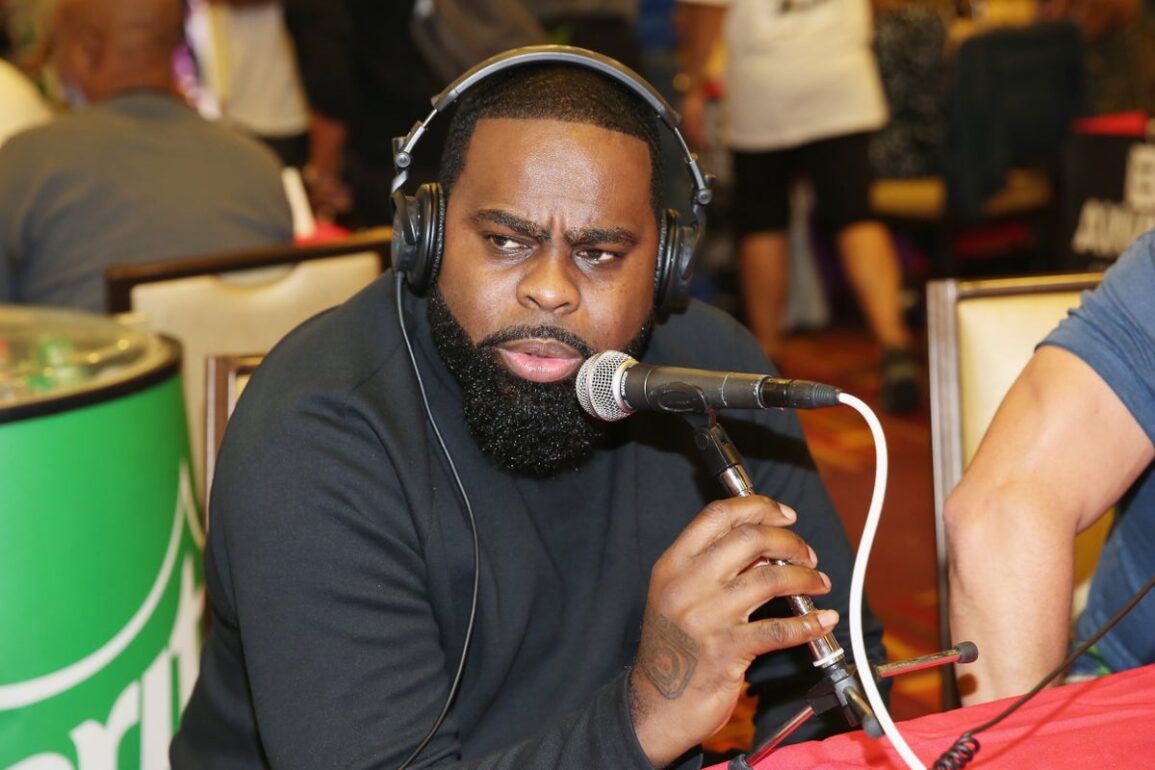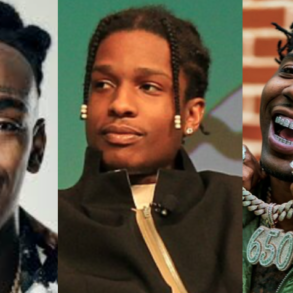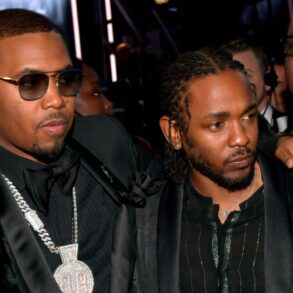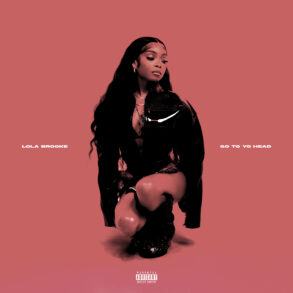Image
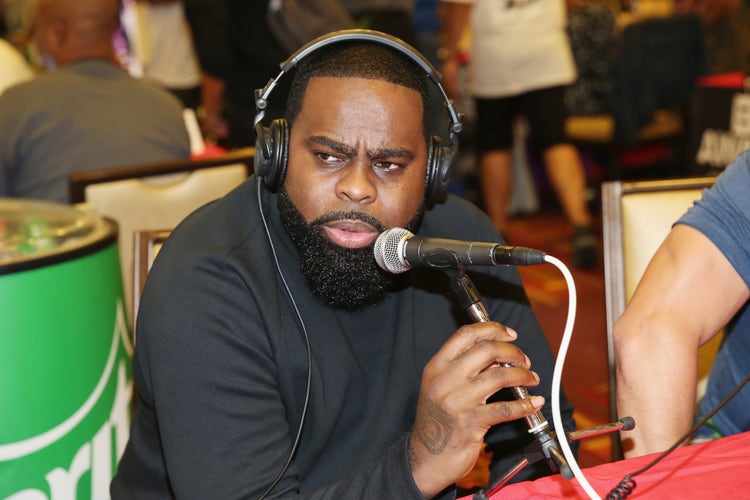
Image Credit
Maury Phillips/BET / Contributor via Getty Images
Image Alt
Kxng Crooked
Image Size
landscape-medium
Image Position
center
For over three decades, Kxng Crooked has been a lyricist in every sense. The man who has lyrically held his own with supreme word sorcerers like Eminem, Rakim, Chino XL as well as his Slaughterhouse groupmates, and left with their respect, embedded himself in the fabric of West Coast Hip Hop by living in the booth.
“If you do something amazing that [Eminem] likes, the way he lets you know that he likes what you did in the booth is by giving you the middle finger,” Kxng Crooked told REVOLT.
In this installment of “Studio Sessions,” the West Coast legend discussed how his music connected with his father on his deathbed, watching Snoop Dogg and Tupac make “2 of Amerikaz Most Wanted,” and what his next era will look like. Read the exclusive interview below.
What do you remember about your first recording session?
My first recording session was when I was 8 years old. My mom and her twin sister took me into the studio. My auntie Charlene was there too. Rest in peace, we love you, we miss you. I did a song called “The Controller.” I named it that because my favorite MCs — Rakim, Big Daddy, KRS-One, Ice Cube — said they were microphone controllers. It wasn’t digital. It was reel-to-reel. So, if you messed up, they had to stop the reel, and they’d have to go back and do it over. That was my first experience in the studio. Ever since then, I was like, “Yeah, this is what I’m doing for the rest of my life.”
You were signed to an independent label known as Muscle Records as a teenager. What recording work did you do there?
One of the founders of Muscle Records is Chucky Miller, a staple in Long Beach to this day. Him and his cousin Leonard Russell built the studio, bro, and everybody was coming in there — that he would allow – and [they] just showed hunger, man. One day, when I was recording there, Snoop [Dogg] came in. Big C-Style, one of the founders of Tha Dogg Pound movement, brought Snoop and Nate Dogg… Rest in peace. This is around The Chronic days. He was working on Doggystyle. So, we got a cypher going. I must have spit about 1,000 bars. I wasn’t letting up (laughs). When they left, Big C-Style told Snoop, “If you want to be a manager in this game, manage that kid Crooked I. He was spitting fire in there.” That’s how I kinda started my journey.
Didn’t you also meet Tupac in the studio?
I most definitely did. When I met Tupac, he was my No. 1 GOAT. I felt like all of his music was speaking to me and my homies. Around that time, I was getting my buzz going in the city, and I got invited to a studio session in Hollywood. My friend Randy, rest in peace, gave me a ride to the studio. When I got there, I saw a big dude at the door. It was Big Suge [Knight]. I get in the studio, and Tupac is there, and they’re playing the “2 Of Amerikaz Most Wanted” instrumental. I dapped up Snoop and thought, “Let me see how these two superstars rock out.” I was blessed. I noticed they were locked in.
In my mind, I thought there would be bottles flowing, women, and stuff going on. Nah, they were focused and locked in. I had a little conversation with Pac. I talked to Snoop and left fully inspired. On your come-up, you need inspiration. You need motivation. The come-up is tough, so every little bit helps.
You’ve had some of the most heartfelt songs of any rapper over the last few decades. Was there a traumatic moment in your life that you had to go to the studio to make sense of?
There were two moments. Firstly, there was a time when I just kept seeing unarmed Black men getting killed by police, and nobody was going to jail. I was just upset, I was angry, and then the tipping point was Tamir Rice. When I saw that video of a 12-year-old boy with a toy gun get killed, I decided to put my anger into the art, and I came up with this album called Good vs. Evil. I had to go and place my anger somewhere else. I had to go get therapy; I had to make sense of it all. I had to tell the world how I felt to see if anybody else felt the same way.
On another quick note, I remember being in the studio about to record a verse when somebody called me and told me my father was on his deathbed. I got out of the booth and went and talked to my father. We hadn’t always seen eye-to-eye. I felt like we missed a lot of time with each other. When you’re young and your pops is not around, you get this resentment, and you carry that resentment with you. I dissed him in a lot of records. When I got older, I started realizing that let me put myself in his shoes. When he was on his last breath, I got to explain to him all the things that I wanted to tell him. Then he went unconscious. I went back into the booth, did a verse talking about my father, and sent the song to my aunt.
She put it in his headphones, and they said he gained consciousness a little bit before, and then flatlined. But it was very important for me to go back into the booth and not go home after that news. I had to go in the booth ‘cause this is my therapy.
You were on Ja Rule’s song “Connected” back in 2002. How did you feel about being on a track where he dissed DMX and 50 Cent?
Well, now I’m about to tell you something that might be shocking. I didn’t know he was dissing 50 and DMX until you said that (laughs). Irv Gotti was close to Suge. I was still on Death Row, and Irv came into the studio session. I started playing him some records, and Irv was like, “I know Cali dudes can spit, but I ain’t heard dudes spit like this.” Irv ended up putting me on the remix of the No. 1 record in the country, Ashanti’s “Baby.” Once I got on “Baby (Remix),” that led to “106 & Park,” doing shows with Ashanti, and sold-out arenas. That began my relationship with Irv and Murder Inc. That’s how I got on the Ja record.
What do you remember about your first session with Dre?
I remember playing this song called “Game for Sale” for him. Big C-Style, once again, took me over there, and I was in the studio with Dre. I was doing the double-time flow that no one was doing besides Twista and Bone Thugs-N-Harmony. Nobody on the West was doing it. Dre asked me, “Are you ready to be a superstar?” I told him, “Yeah, let’s get it.”
People may not truly understand how prolific a recording artist you are. At one point, you were dropping a new song every week. What does your productivity look like?
When I was dropping a song once a week, I was also dropping mixtapes and EPs in between. I recorded well over 200 joints in a year. I record like three joints a session. So, every day, if I work five days a week, I got 15 songs. I never imagined that I would be recording so much. The dedication to dropping a song a week meant if you got pneumonia, you got sick, you gotta still go in there and do this rap. My engineers will all say that my folder is the fullest of music. During one year in COVID, I did about 200 features, but they were indie features. You might see Lil Wayne did 50 features this year and think that’s crazy because all of the features are with mainstream artists. In the underground, 50 features for me is a regular six-month period of time. I do about 200 features a year, bro. I probably have 15,000 songs recorded.
With all of those unreleased songs, what is one collaboration you hope comes out one day?
Okay, these are never coming out. I got a joint with Dr. Dre that’s not coming out. I already know it’s not coming out, but it’s crazy. I got a Slaughterhouse joint with Eminem. Scoop DeVille produced it, and he redid “Shook Ones Pt II,” and everybody is rhyming in and out of each other. The whole Slaughterhouse and Eminem, back and forth, in and out. I do have a record with E-40 and Kokane that Rick Rock produced that will see the light of day.
Speaking of Eminem, what is it like when lyrical titans like you two collide in the studio?
Bro, first, a lot of Hip Hop is getting talked about between me and him because we share that vibe. We love Hip Hop. When we are creating, you can tell that he learned from Dr. Dre how to be a scientist. He’s a mad scientist in there. If I lay a hook, he might stack it with 50 different vocal tracks, and then start whittling away the imperfect ones, and get it to where you can’t even barely tell the voices are stacked.
He’s really a scientist that dedicates hours to it. I don’t have to explain why I said this rhyme that way, or why I switched patterns here, or why I [dragged] this word’s enunciation out. I don’t have to explain anything to this man about the art of rhyming. If you do something amazing that he likes, the way he lets you know that he likes what you did in the booth is by giving you the middle finger (laughs).
What era are you at now in your career? And what do you have coming for the rest of 2024?
I’m working on a film project for the West Coast. I’m working on something that celebrates the history of the West Coast. I’m working on that. I’m working on the third installment of Good vs. Evil. This is the last of the trilogy. I’ve been working on that, going in the lab, and really banging out that album. I have two more recording sessions to complete that, and then I’m gonna start mixing it. I got the artwork. My little brothers, the Shoe Gang, are working on a bunch of projects.
Those dudes are rap robots. I’m doing a collab with Walter Hill, a premium eyewear company, for some COB shades next year. I started a company with some guys on the publishing side of music that we plan to launch next year. I’m staying busy. I’m trying to hang in there. They’re defunding rap music right now, and we’re going through a different kind of phase. AI is on the attack. I’m really just trying to stay focused.
This post was originally published on this site be sure to check out more of their content.

